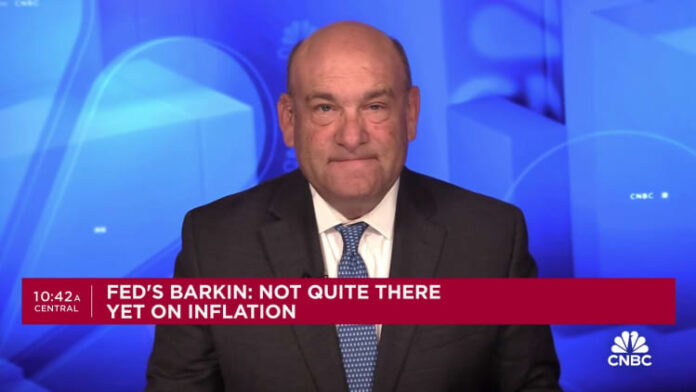People walk past the headquarters of the People's Bank of China (PBOC), the central bank, in Beijing, China, September 28, 2018.
Jason Lee | Reuters
BEIJING — Ratings agency Fitch no longer expects China to cut its benchmark interest rate this year. Given that the U.S. Federal Reserve is keeping rates high, it has pushed back its expectations for a cut until next year.
Fitch now forecasts that China will keep its one-year medium-term lending rate (MLF) unchanged at 2.5 percent this year and cut it to 2.25 percent next year. In March, the rating agency had forecast a cut for 2024.
“There are several factors behind this. First, on the external side, concerns about the exchange rate against the US dollar due to changing expectations of the Fed are slowing down the [People’s Bank of China]” Jeremy Zook, head of Asia-Pacific sovereign credit rating agency Fitch Ratings, said during a presentation on Wednesday.
Next year, “when the Fed starts cutting interest rates, we think that should give the PBoC a little more room to maneuver,” he said. Zook expects Beijing to make greater use of fiscal policy this year.
The Fed kept its benchmark interest rate unchanged last week and only announced a cut by the end of the year. This runs counter to investors' expectations for 2024 that the Fed would soon ease monetary policy again after aggressive rate hikes.
The Fed’s tighter policy has pushed the US dollar up against the Chinese Yuanwhich, according to Wind Information data, is close to reaching the lows last seen in 2008. A weaker Chinese currency is increasing the pressure of capital outflows.
“There are also concerns that banks' net interest margins are quite low, and that also poses challenges for the PBoC,” Zook said. The net interest margin (NIM) is a measure of a bank's profitability as it calculates the difference between the interest the financial institution receives from borrowers and the amount it has to pay on deposits.
According to official data accessed by Wind Information, the last time China cut the one-year MLF was in August 2023.
The People's Bank of China sets the MLF every month and uses it as a guideline for the benchmark loan prime rate (LPR), which serves as the main reference point for financial institutions' lending rates.
PBoC Governor Pan Gongsheng said in a speech on Wednesday that monetary policy would remain “supportive,” noting that the yuan's exchange rate had “remained basically stable under complex circumstances,” according to a CNBC translation of the Chinese transcript.
He pointed out that major industrialized nations had repeatedly postponed a change in their monetary policy and that “the interest rate gap between China and the United States remains at a relatively high level.”















